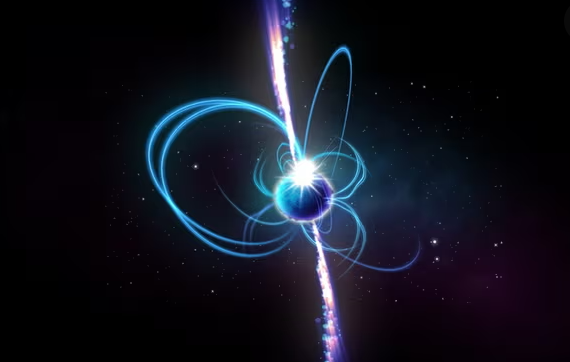Astronomers have recently uncovered a highly unusual celestial object that emits powerful pulses of energy at regular intervals, leaving scientists puzzled about its nature. The discovery, which challenges conventional understanding of stellar objects, could represent a completely new class of star, shedding fresh light on the complexities of the universe.
A Startling Discovery
The enigmatic object was first detected by a team of astronomers using a powerful radio telescope. It exhibits a pulsating pattern, emitting bursts of energy approximately every 20 minutes. This behavior is unprecedented, as known pulsars and magnetars—two types of highly magnetized neutron stars—typically pulse at intervals ranging from milliseconds to a few seconds.
The object, temporarily named GPM J1839−10, was initially discovered in 2021, but subsequent studies revealed that it had been emitting periodic signals since at least 1988. This longevity is another aspect that sets it apart from other known pulsating objects, which usually have much shorter lifespans in their detectable phase.
What Could It Be?
The most compelling explanation proposed by researchers is that GPM J1839−10 may belong to an entirely new class of stellar objects. Its behavior does not neatly fit into the existing categories of neutron stars, white dwarfs, or other known cosmic entities. The prevailing hypothesis is that it could be an ultra-long-period magnetar, a type of neutron star with an extremely powerful magnetic field that slows its rotation over time, leading to infrequent pulses.
Alternatively, some scientists speculate that it could be an unusual type of white dwarf, a remnant of a star similar to our Sun. While white dwarfs generally do not exhibit pulsar-like activity, some rare cases have been found to emit bursts of radiation, making this a possibility worth investigating.
Implications for Astrophysics
If confirmed as a new class of star, the discovery of GPM J1839−10 would have significant implications for astrophysics. It could help scientists refine their understanding of stellar evolution and the life cycles of stars. Furthermore, the object’s longevity and stability challenge existing models, suggesting that other similar celestial bodies may exist but have yet to be identified.
Another major implication relates to the study of extreme magnetic fields in space. Magnetars, for example, are already known for their incredible magnetic strength—trillions of times stronger than Earth's magnetic field. If GPM J1839−10 is indeed a variant of a magnetar, it could provide fresh insights into how these powerful cosmic entities form and behave over long periods.
Future Observations and Studies
To learn more about this mysterious object, astronomers plan to conduct follow-up observations using different telescopes, including those capable of detecting X-ray and gamma-ray emissions. These additional data points may help determine whether the object is truly a new class of stellar body or an extreme example of an already-known type.
The discovery of GPM J1839−10 is a reminder that the universe still holds many secrets, waiting to be uncovered by persistent and curious scientists. As telescopes become more advanced, and observational techniques improve, further discoveries of enigmatic cosmic objects may reshape our understanding of the cosmos once again.

Comments
Post a Comment